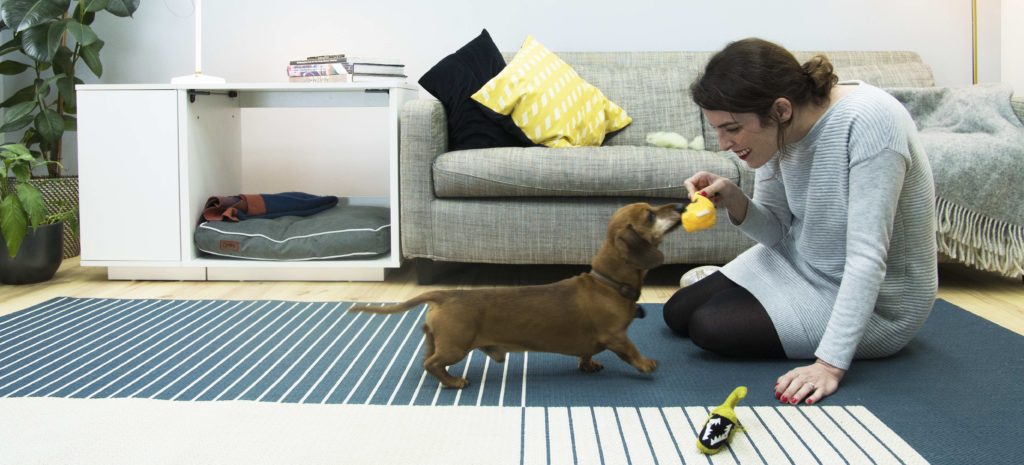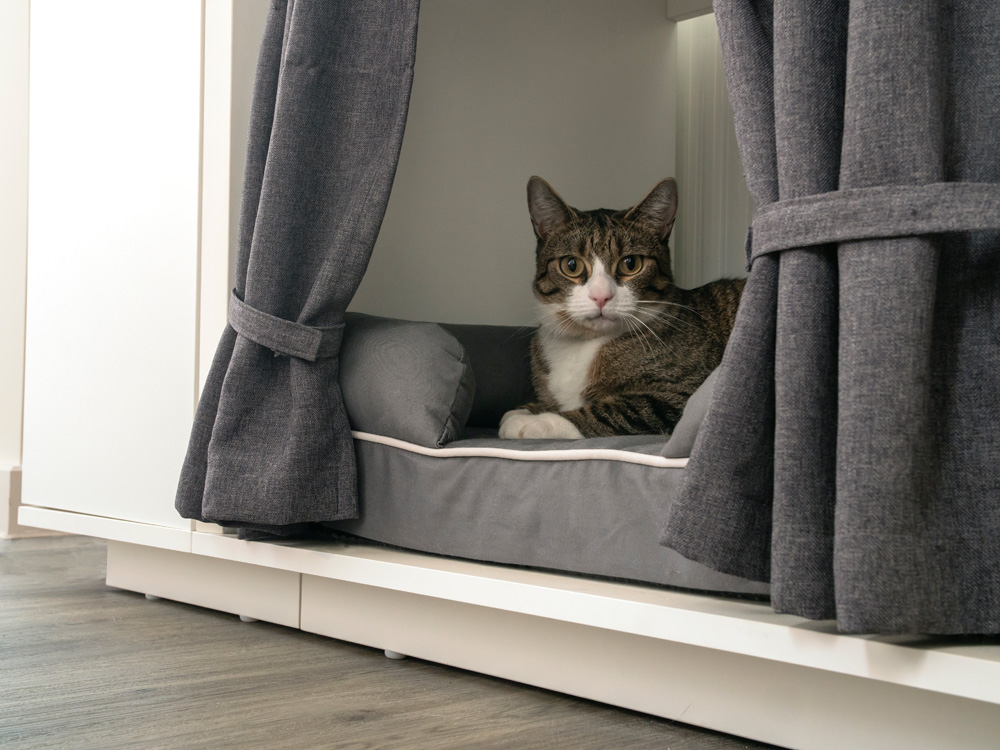Introducing A New Baby To Pet Cats And Dogs

The arrival of a baby in a household turns things upside down. That’s certainly how it can seem to your pets. A dog may find there’s less time for walks and playing, and a cat may suddenly be ousted from her favorite sleeping places in the bedroom or on your lap, due to the presence of the baby.
It’s important to get your pets used to the idea of having the newcomer around, along with the changes in routine that go with it. And ideally the preparation needs to start before the baby is born.
Prenatal Pet Training
In the months leading up to the birth, spend slightly less time with your cat or dog – particularly if they are used to lazing in your lap or sitting by your feet demanding attention.
If your dog is not fully trained at this point, fill in the gaps with some training sessions. Get an expert in to help out, if necessary. Your dog needs to know the basic ‘Sit’, ‘Stay’ and ‘Leave it’ commands, at the very least. It’s essential that the humans in the house reinforce their roles as Alphas in the pack.
A new baby will bring new sounds and smells to the house. You can get your pets ready for this by inviting mums and dads with babies or toddlers to call in for coffee. Play a recording of a crying baby to acclimatize pets’ ears, and switch on any noisy new toys, mobiles, swings or other baby-related apparatus. Let your pets sniff a nappy and a cloth with a few drops of baby oil on it. Familiarity is half the battle.
Get Your Pet Vet-Ready
A neutered pet is a calmer pet, and less likely to bite. This is especially true with males. When neutered, they are less likely to view the baby as a rival. Arrange for a vet to perform the operation, if the pet is not yet neutered. And while you’re there, make sure Puss and Fido are up to date with their vaccinations, worm-free, and generally in tip top health.
Reset Schedules
Babies bring lots of unpredictability to a household, and old routines soon break down. There’s nothing wrong with this, but a pet who’s set in his ways may not take kindly to sudden change. Break him in by varying feeding times, blocking off no-go areas with a baby gate, or perhaps hiring a dog walker.
If the human mum-to-be has always been the pet’s chief companion, it’s handy if you can introduce another ‘favourite’ into its life. This could be a partner, older child or friend – anyone able to spend quality time with the animal.
Introducing the Baby
Before letting a dog or cat see the baby, let them sniff a blanket and a soiled nappy. Try not to show any nervousness when bringing the baby into the house for the first time, as pets will pick up on the bad vibes.
To make the first introduction, sit with the baby in your arms – ideally in a ‘neutral’ room, one where the pet doesn’t usually go – and let the dog or cat approach in its own good time (and one at a time, if you have multiple pets). Don’t force the issue. Have some treats ready to reward good behavior.
You can reinforce the positive associations by treating a dog whenever it’s around you and the baby. That way your pet will come to associate the baby with good things (i.e. food!) A cat will need less fuss in this respect, and will simply equate the baby with you, logging it as something not to worry about.
Whenever there’s any interaction between baby/toddler and pet, make sure there’s an adult around to keep an eye on the situation.
 Special Notes For Cats
Special Notes For Cats
A docile cat needs to get used to the new baby, and to keep away when it’s asleep. A more flighty cat should simply be kept away. Toddlers seem to have an instinct for grabbing handfuls of pet fur, and a nervous cat may react by scratching. A cat flap with a lock can be handy in the early days, to keep puss outdoors at key times.
Many cats dislike a baby’s crying, and will disappear when the screaming begins. This is very handy! Make sure there’s a quiet, safe spot for them, away from the mayhem. The Maya Nook is a perfect solution to give your cat some privacy.
Cats feel exposed and nervous when they eat, so you should keep a toddler away from the place where your pet is feeding. It should also go without saying that you should prevent young ‘uns from rummaging in the litter tray too!
Special Notes For Dogs
All dogs will need to be well-trained, in a situation where trust is so fundamental. Some dog breeds are very rarely going to be friendly with children, though. A dog bred over hundreds of years for aggression is NOT a dog you should have in the family home. ‘Snappy’ breeds such as Jack Russel, Dachshund or Chihuahua can be problematic too, but you probably know your dog best.
A treat-based puzzle toy such as a Kong ball is a useful distraction. You can give it to your dog while you spend time tending to the baby, to divert the pet’s attention.
It’s important not to abandon dog walks, as that will lead to doggy stress and frustration. It’s a case of ‘business as usual’, where ‘usual’ has simply undergone a few changes.
The dog/child relationship is a two-way process, and youngsters need training too. Teach them to be gentle with the dog, and they will have the basis for a good relationship.
And the importance of that relationship shouldn’t be underestimated. Children learn lots about friendship, respect and responsibility from interacting with animals. There is also evidence that allergies are less of an issue in kids who have been brought up with pets.
So – you’ve replaced your ‘pet baby’ with the real thing. That means big change. But when handled properly it’s a positive change, the beginning of a new chapter in the happy family home.
This entry was posted in Cats